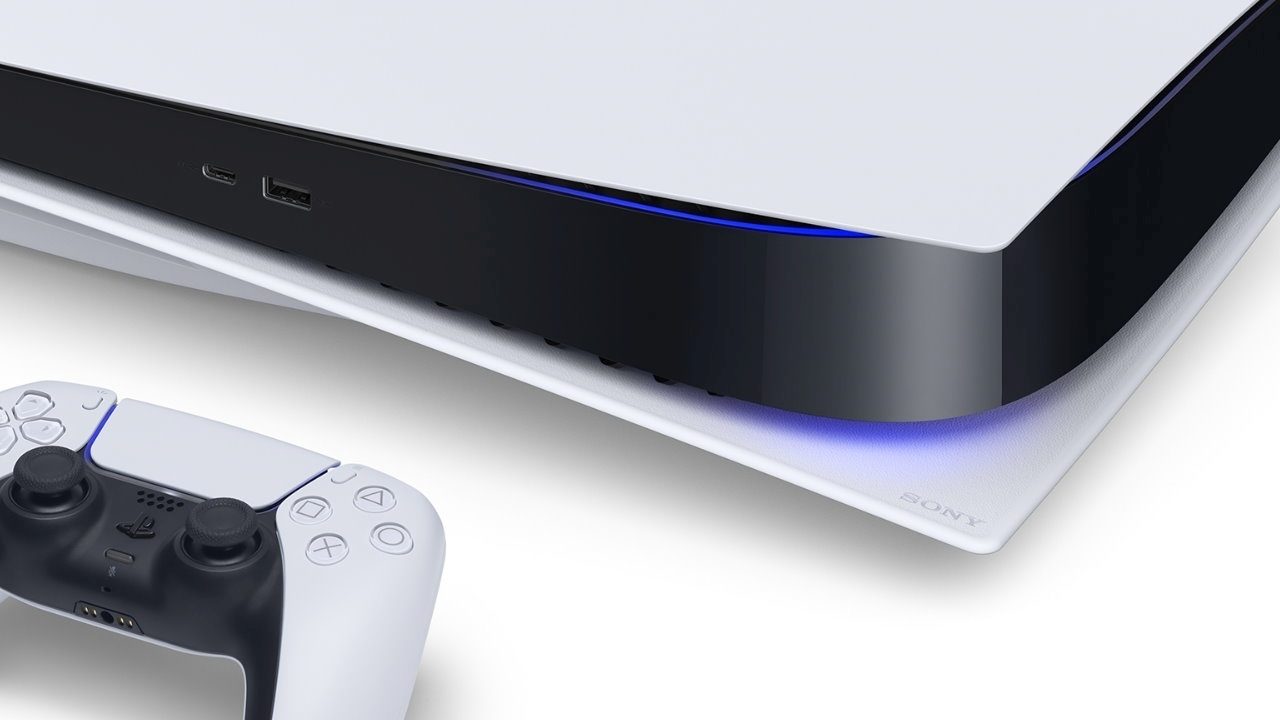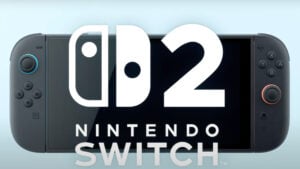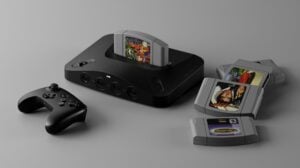It doesn’t take a review to tell you that the sheer size of Sony’s new PlayStation 5 can be seen as a statement. The ginormous Stormtrooper-white shell, easily a larger and bulkier unit than anyone could have expected, is of course sized that way for practical reasons, involving heat dissipation and cooling apparatus.
Although you could also argue that Sony decided to supersize simply to represent their immense victory in the highly touted, and largely confected, “console wars”, which they have been locked into with Microsoft since the very first time the two companies squared off, when the original Xbox was released in 2001.
Sony has beaten Microsoft each and every generation, with sales being the main metric. In the first instance, the PS2 shipped around 155 million units, dwarfing the Xbox’s 24 million. Then came close competition, where Microsoft clawed back and watched the Xbox 360 soar to a comfortable 84 million units sold; the PS3 still had the edge, at 87.4 million. Though Microsoft’s most profound loss was the most recent, estimated only because they stopped releasing unit sales: Xbox One – 46.9 million; PS4 – 108.9 million.
RELATED: The Best PS5 Games Out Right Now
So it’s not surprising that Sony is peacocking with the PlayStation 5, sporting a vastly different body to when design plans were first under review earlier this year. They could have built a similarly large shell in the usual black that has defined PlayStation since the second generation. Instead, you’ve got two flowy white waves flanking a main black panel, creating a futuristic aesthetic that wouldn’t feel out of place perched in the background of a Ridley Scott film.
RELATED: Xbox Series X Review: The Good & The Bad
PlayStation 5 Specs
Regardless of whether you like the look or not (I do), the heaving, roughly 4.5kg unit has been purpose built to offer some of the most powerful specs we’ve seen in a console to date. And while it may fall slightly short of the raw horsepower backing the new Xbox Series X, what’s gone into the PS5 is thoroughly impressive.
Here’s a quick rundown of the key specs before we get any further into the PlayStation 5 review.
- CPU: 8x Zen 2 Cores at 3.5GHz with SMT (variable frequency)
- GPU: 10.28 teraflops with 36 compute units at 2.23GHz (variable frequency)
- RAM: 16GB GDDR6/256-bit
- Internal Storage: Custom 825GB SSD (Solid State Drive)
- Expandable Storage: NVMe SSD Slot
- Optical Drive: 4K UHD Blu-ray Drive (vs standard Blu-ray Drive in the PS4).
In almost every category, the PS5 is a substantial improvement over the mid-gen-four PS4 Pro. Although there’s one exception: storage. The PS4 Pro had a 1TB HDD, whereas the PS5 brings in a 825GB Solid State Drive. A lot of acronyms sure, but if you can’t be bothered with tech, just know that an SSD is significantly faster than a HDD, and has been chosen this time because, via a 12 channel flash interface, it integrates better with the console’s architecture, resulting in much more seamless processing and a theoretical, blistering speed of 5.5Gbps. It’s ridiculously fast and powerful stuff, taking you past loading screens in mere seconds, but still pales when it comes to a high-end gaming PC, and falls slightly short of the new flagship Xbox.
Overall, it really depends on how developers maximise the specs at the end of the day, and even if the PS5 falls behind Xbox here, the power differential will matter less once those purpose built games start rolling in. There’s little doubt that first-party developers like Naughty Dog (Uncharted series, The Last of Us) and Guerilla Games (Horizon Zero Dawn) will build titles that completely optimise the PS5’s internals.
There is one area in which it feels like the PS5 hardware surpasses Sony’s rivals. Where the flagship Xbox makes do with the Wi-Fi 5 standard, Sony has future-proofed the PlayStation 5 with Wi-Fi 6, which upon review makes much more sense than Microsoft’s choice. This makes little difference right now for anyone without a router that supports Wi-Fi 6, but it opens up a well of possibilities that rely on faster data transfer and the nifty tricks that come with the next-gen Wi-Fi standard. Most of all, it seems to be positioned specifically for the long-rumoured sequel to PSVR, which could theoretically be wireless if it comes packaged with an external antenna.
RELATED: Step Aside Plebs, The 24K Gold PlayStation 5 Is Here

Keeping It Cool
It’s important to talk about the design a bit more, because airflow is key to the PlayStation 5 and drives just about everything mentioned in this review. The main problem with the PS4 – now seven years old – which would get obnoxiously loud and hot at times, was that all the cooling assembly in the relatively flat and closed unit would regularly get clouded with dust. The PlayStation 5’s more open, logical and breathable design ensures that isn’t the case anymore. With the entire back panel being one big exhaust port, the heat will be managed much better. As such, there aren’t any problems with those buzzes and whirrs anymore; in my week spent with the PlayStation 5, not once have I heard it make so much as a whimper.
Gameplay, So Far

As mentioned above, I’ve spent a week with the PlayStation 5 for this review, but have been fairly limited in terms of new games I can play. They have been confined to old titles, available because I purchased them on my PlayStation ID, or have been instantly access to them with the PlayStation Plus Collection – a 20-deep greatest hits available to all PS5 owners on launch day. But also the pre-installed Astro’s Playroom, and Spider-Man: Miles Morales – which could, I guess, be shallowly described as the Grand Theft Auto of the Marvel universe.
A game like Bloodborne, introduced in the early stage of the PS4, doesn’t look any better on the PS5 than it did last generation. There’s still that meticulously dark atmosphere and swift, bloody, and punishing gameplay that has made it such an endearing classic, but it doesn’t benefit much from what Sony are calling “PS5 Boost Mode”, a backwards compatibility engine which uses the system’s architecture to offer the best version of an older game.
The performance is notable because Bloodborne is locked at 30 frames per second, and it is rather stubborn with how it’s built. That’s most likely why there’s no noticeable improvement. Whereas a game with an unlocked frame rate, say 60fps, would fare much better. In theory, the PS4 Pro would run such a game with a fluctuation between 40fps and 60fps. If it supports “PS5 Boost Mode”, that title will hit native 4K, 60fps much more consistently. Fortunately, plenty of titles fall into this category like Darks Souls III and Days Gone.
This is important to highlight because it shows that the PlayStation 5, as powerful as it is, isn’t some magical system that can upgrade just any game through backwards compatibility. The game has to have been built with optimisation in mind. Much like with the XBX, the PlayStation 5 importantly supplies the specs needed to give developers the confidence to produce more games like this, without having to worry about an uptick in frame rate offsetting the resolution and muddling the overall look and feel of the game.
RELATED: Cyberpunk 2077 Delayed To December

Of course, the graphical features are a different story altogether with Spider-Man: Miles Morales. Although the PS5 launch title has also been made for the PS4, it’s clear Insomniac Games and Sony wanted this to specifically showcase just what the new system is capable of. It’s not pushing the limits of the controller (more on that below) like Astro’s Playroom is, but it is sure serving as a brilliant showcase for the console’s consistent 4K, 60fps performance. It’s gorgeous, fluid and feels even richer than the first Spider-Man game.
In the game, you play as Miles Morales, the second Spider-Man and successor to Peter Parker who saunters off to Europe with his girlfriend, leaving the new guy in charge. Swinging around New York City at a breakneck pace, beating up random crime lords, and working your way to Spider-Man’s most famous villains is all realised better simply because of how refreshingly fast and vibrant the game is. Buildings are more detailed, cutscenes are intensely dramatic and realistic, and if you look closely, lighting feels more alive thanks to real-time ray tracing (a definitive feature of new-generation consoles).
RELATED: Call Of Duty: Black Ops Cold War Has Been Confirmed
Most of this is best shown in the opening sequence of Spider-Man, where both Miles and Peter fight Rhino. With fleshier details, Rhino is appropriately intimidating as the hulking villain who runs absolute chaos across the city. The action is heavy, and the pace of the actual battle is so fast that there’s absolutely no room for error. A particular highlight is when Miles webs his way onto Rhino’s back, who is charging like a speeding bullet through a crowded shopping mall.

I of course needed to focus on this PlayStation 5 review instead of indulging myself too far into the game, so I haven’t yet been able to breeze past anything more than a few hours into what will undoubtedly be a bigger map than the previous Spider-Man. Just know that New York City looks absolutely incredible, fully realised in the winter season for this story, with powdered snow blowing everywhere and the sun gleaming off the shiny surfaces. The lighting really does make a big difference to the sense of immersion.
DualSense Is The Key
The other new title I was able to play is Astro’s Playroom. It’s an all-ages, heavily stylised reference title in the same vein of Nintendo’s Wii Sports or NintendoLand, in that it’s mostly designed to show off the hardware. It takes cues from traditional platforming games to at least present something more enjoyable than the usual instructional pack-in title, but its main purpose is to highlight the specifics of the DualSense Controller that is so key to the PlayStation 5.
I’ve already written about the DualSense at length, but basically a lot of new tech has gone into this controller to create a new kind of tactile feedback map. This is through an improved fidelity built-in speaker, precise motion sense, adaptive triggers which simulate various amounts of pressure and resistance as a function of what you’re doing in a game, and most of all, haptics.
Haptic feedback is what Nintendo brought to the gaming world with the innovative Rumble Pak for N64 in 1997, and continued experimenting with right up until today’s Nintendo Switch. It’s what makes your smartphone vibrate when a text message is received. But it’s more than just a vibration, especially with the DualSense controller. Here, it’s a theatrical, tightly nuanced and distinctly scaled series of jolts that mimic what’s happening on screen and react to various actions. For example, walking on a sandy surface feels much different to walking on ice, or swimming in water. But that’s just the start of it.

One particularly effective moment in Astro’s Playroom involves your little robot character getting swept up in a dust storm and swirled about from left to right. The controller mimics this, with subtle rumbles swirling around in the controller, prodding different parts of your grip to mirror what the character would be feeling. It’s extraordinary and opens up massive potential for future games. Though said games would to be made specifically for the Playstation 5, as it wouldn’t make financial sense for developers to invest in designing these specific haptic maps if their game was also built for the Xbox and PC market.
Astro’s Playroom is also effective because it leans heavily on nostalgia within the PlayStation ecosystem. The main goal is to discover “artefacts” hidden around levels, most of which are built with even more references to Sony’s gaming history. Everything you find is then collated into a digital museum that showcases just how far the company has come in the world of gaming. It’s a bit indulgent and self-mythologising, but it’s also taking a page from Nintendo’s book and acknowledging that nostalgia is pretty much a drug for dedicated gamers.
That’s not all Sony has taken from Nintendo’s playbook though. As described above, the DualSense controller is the most unique part of the PlayStation 5 and is the main hardware-related point of difference from the Xbox Series X. That’s based on a blueprint Nintendo has been writing for more than two decades, finally fully committing themselves to experimenting with hardware to go beyond regular gaming and take immersion to another level.
When (not ‘if’) PlayStation 5 emerges victorious this generation (despite Microsoft avoiding the fight in the first place), they owe a great deal of thanks to Nintendo for paving the way. Plus, the controller for the PS5 feels much better than previous iterations.
Here’s What We Like
Although much of the console has been discussed above, it’s important to sum up this PlayStation 5 review simply by the features that I like, and the one’s I’m not yet sold on.
Ray-Tracing
I lead with this on my Xbox review as well, and I’m reiterating it here simply because it’s one of the defining features of new-generation gaming. I’ll save you the explanation, but basically real-time ray tracing is a process that simulates more realistic, natural lighting details and allows developers to create richer environments as a result. On the XBX, this was best shown through the dark, gritty atmospheres of Gears 5. On the PlayStation 5, this is mostly seen during the bright hours of Spider-Man: Miles Morales, where planes cast shadows streaking across New York skyscrapers and sunlight reflects off the fleshy, scarily detailed skin of the various characters you meet.
The benefits of ray-tracing are mostly subtle, and may go largely unnoticed for the most part, but if you pay attention it’s easy to see how this could be a game-changer for developers looking to create bigger, better games with more immersive sets. Going back to PS4 titles is the best way to see how much of a difference real-time ray tracing makes, with lighting looking flat and artificial on older consoles. It just makes games look far better than before.
More Than Just A Controller
For the reasons listed above, the DualSense controller is an absolute game-changer for the PlayStation 5. Again, it all depends on how developers use it in the future. Spider-Man: Miles Morales – at least judging based on what I’ve played so far – doesn’t exactly make the most of it like Astro’s does, but you’d still be able to tell the subtle work put into the vibrations when you’re, for example, swinging from a big building or being pummelled by some criminals from every direction.
It also just feels really nice in the hand. Not as ergonomic and lightweight as the Xbox Series X controller, but considering the weight behind this thing, PlayStation 5 has nailed the design with longer stems and a better, firmer grip thanks to little textural bumps on the back. Those bumps, by the way, are made up of tiny little PlayStation signs – O, X, square and triangle.
Finally, a controller actually means more to a console beyond the basic button inputs. This tethers your hands to the game in a more seamless, symbiotic way while also giving developers a completely different platform to consider when designing their games.
Plenty Of Games Coming
Compared to the 100+ games you get with Xbox Game Pass, the PlayStation Plus Collection really doesn’t seem all that generous. You get 20 games off the bat, all of which were greatest hits on the PS4. Bloodborne, Uncharted 4, The Last of Us and The Last Guardian are some of the highlights, and all are incredible, award-winning titles that should easily boost the value for those forking out $750 for the PlayStation 5 (or $600 for the discless version – which shouldn’t be different to anything outlined in the review, aside from the fact that it has no disc drive).
Plus, PlayStation 5 just has more exciting games in the near-future when compared to the Xbox. There’ll be a new God of War coming soon, a new Horizon, and a new next gen Ratchet & Clank adventure that looks like it’ll be the perfect showcase for just how speedy the PS5’s processing is. You can watch the jaw-dropping trailer here.
Design With Purpose
Some may hate the design, as discussed above, but I love it. It’s more than just the shell too. It’s the USB-C connection on the controller to pump up the rechargeable battery, meaning I won’t have to contend with finicky micro-USB cables anymore. It’s those textured bumps on the stems I mentioned. And it’s the awesome lava lamp-like effect the power indicator has when it’s bouncing white light off the shell, creating an ambient effect that’s way cooler than the shitty, barely noticeable blue light that indicated power on the PS4. It’s impossible not to tell when the PS5 is on, or when it’s off (and safe to unplug).
A UI With No Clutter
The PlayStation 5’s user-interface (main menu) is the best possible iteration of the software yet. And the improvements aren’t just subtle, they’ve gone and completely reconsidered the whole thing. Best of all is the control centre that springs up when you press the central PlayStation logo button on the controller, bringing up all these options that quickly and easily grant you access to just about all network, system and social functions you could want.
As per the restrictions and secrecy, I wasn’t able to go online and interact with other PlayStation users, but if I wanted to I could easily do so without having to scramble across multiple screens this time. As with all other functions, the new PlayStation 5 UI just streamlines things in a much better, more logical fashion. Even the PlayStation network features get a more efficient refresh, like the decluttered PlayStation store.
The homepage is incredibly attractive too, with its celestial golden glow beaming from the top left corner, highlighting the various functions and possibly serving as a nod to the ray-tracing capabilities.
What We Don’t Like
Not As Nimble As The Xbox
Don’t get me wrong, the SSD on this thing is fast. Games boot up in a quick finger-snap, and in-game speed sees no noticeable drops in performance. But there’s still not enough speed for impressive tricks like Microsoft has pulled with the Xbox Series X. I have both consoles sitting side by side so going from one to another highlights the vast differences between the two.
The biggest difference here is Xbox’s next gen Quick Resume feature, which allows you to have multiple games suspended in separate partitions of the SSD so you can multitask between them and switch in seconds without losing your progress. While the PS5 has a “switcher” that brings up previous used apps, moving from one game to the next isn’t as instantaneous. Say for example, I’m swinging ultra high in Spider-Man: Miles Morales and pause the game, then switch to Bloodborne. If I switch back to Spider-Man, it just restarts the game and takes me back to the title screen. Make sure to keep that in mind before you expect to switch a game before you reach a save point.
It’s a non-issue in the bigger picture, but is still a lowlight when compared to the Xbox Series X.
Not Enough Storage
As above, the PS5 has an 825GB SSD, but when you actually boost up the PlayStation and start downloading games you’d realise that only 648GB is available. That’s hardly surprising seeing as the operating system and preinstalled apps take up space, but it also gives you storage that’s really not that much more than the original PS4. This is doubly problematic as modern big-ticket games are increasingly coming in at bigger sizes.
Already it has been confirmed that Call of Duty: Black Ops Cold War will take up an eye-watering 133GB of space. Consider even bigger next gen games and how much they will demand from the SSD.
There’s an NVMe SSD expansion bay so users can expand on the storage, but unless the external drive has been specifically designed to work with the PS5’s speedy architecture, anything stored on it won’t be able to take advantage of the new capabilities.
It’s clear that even 1TB is just not enough as we move into the next-generation of gaming, and storage is going to be the big issue surrounding these consoles.
The PlayStation 5 will be available in Australia from November 12 at a retail price of $749, although at the time of this review, pre-orders are very hard to come by.
















